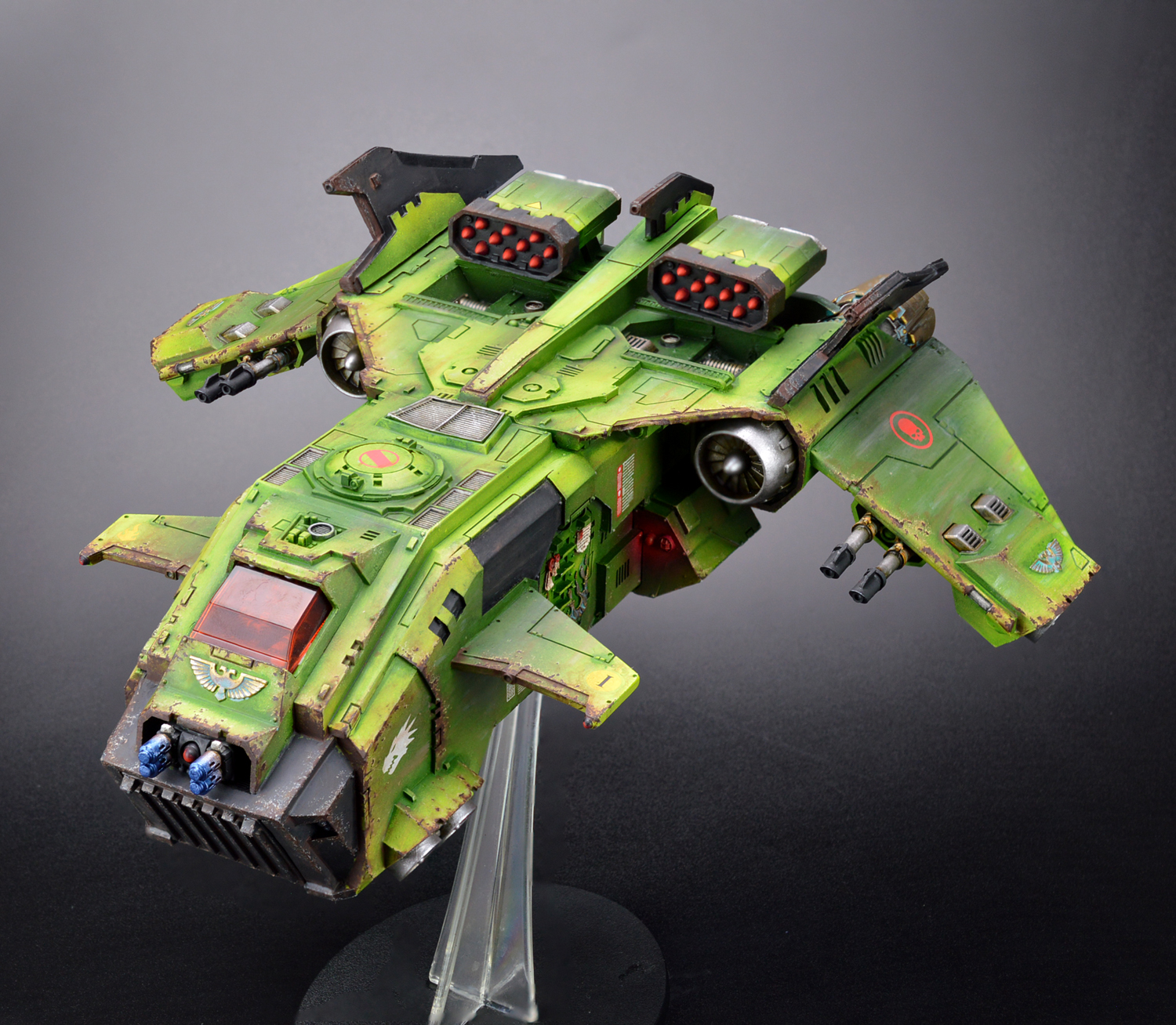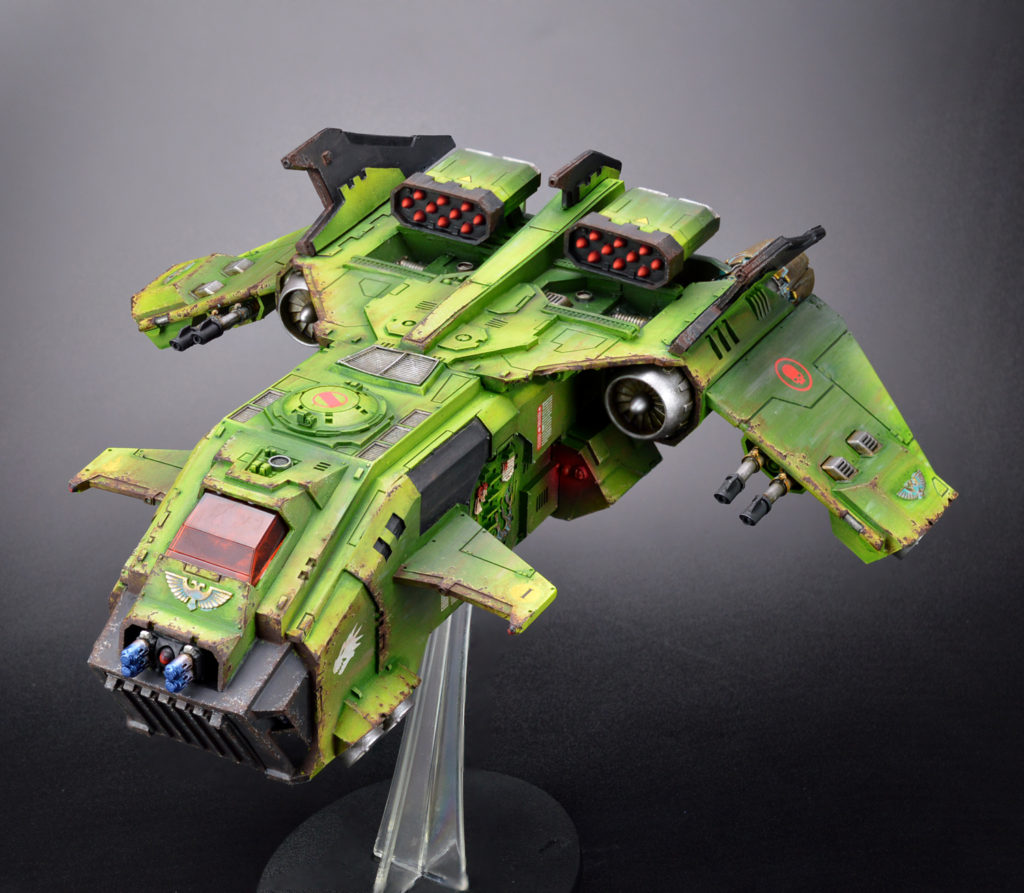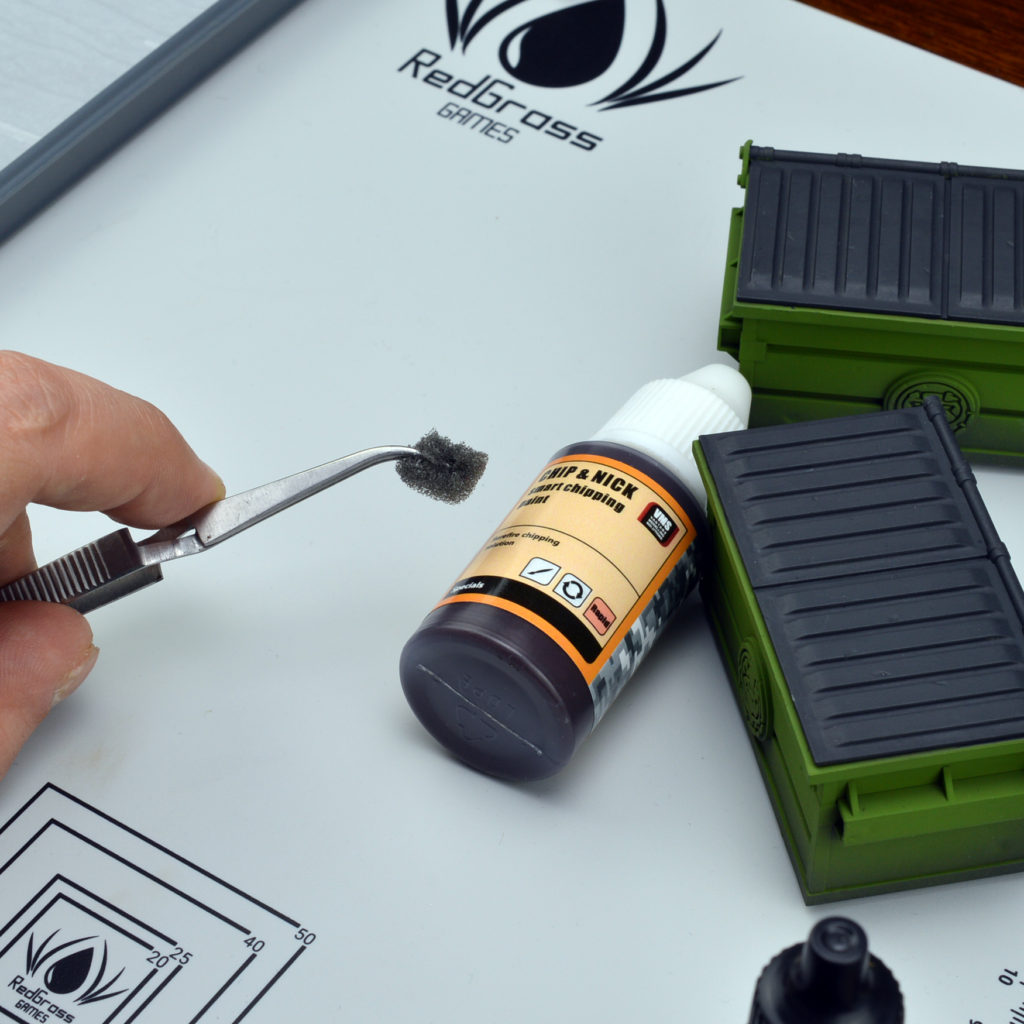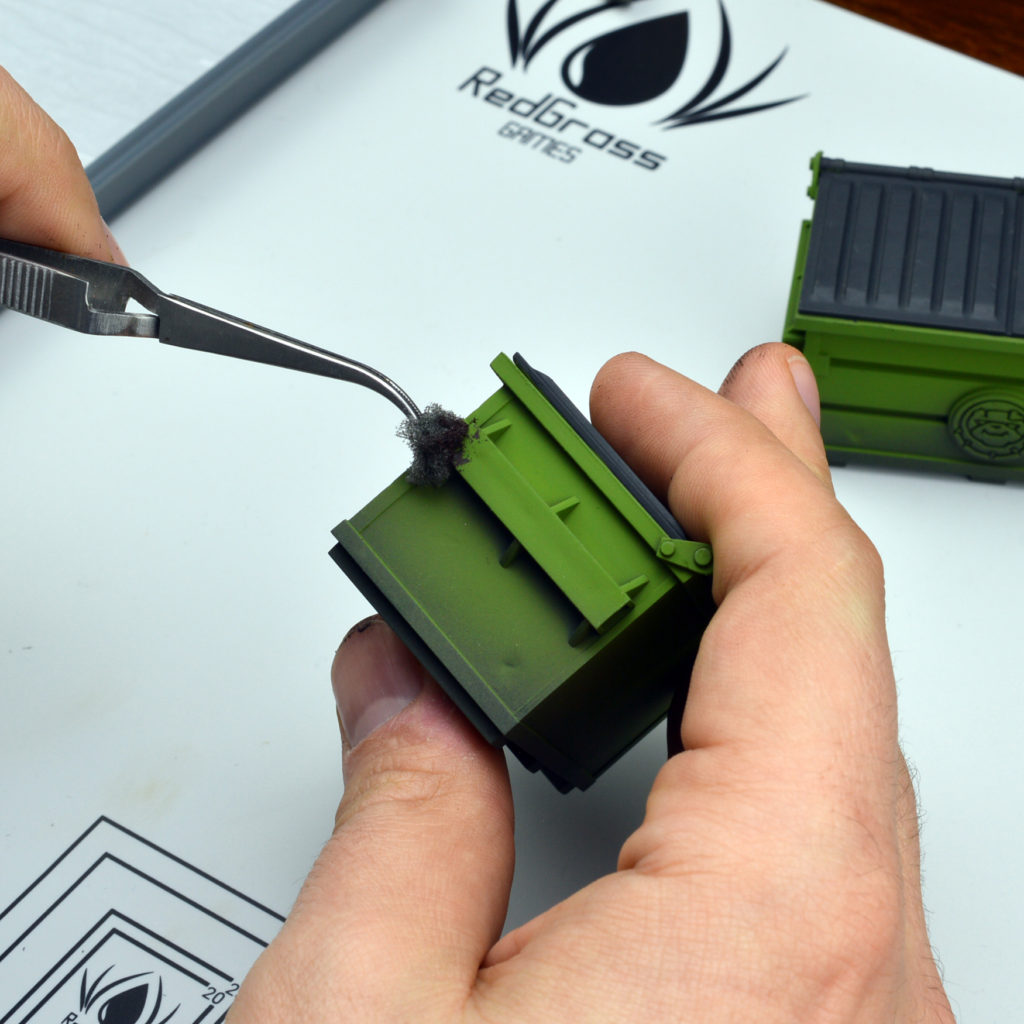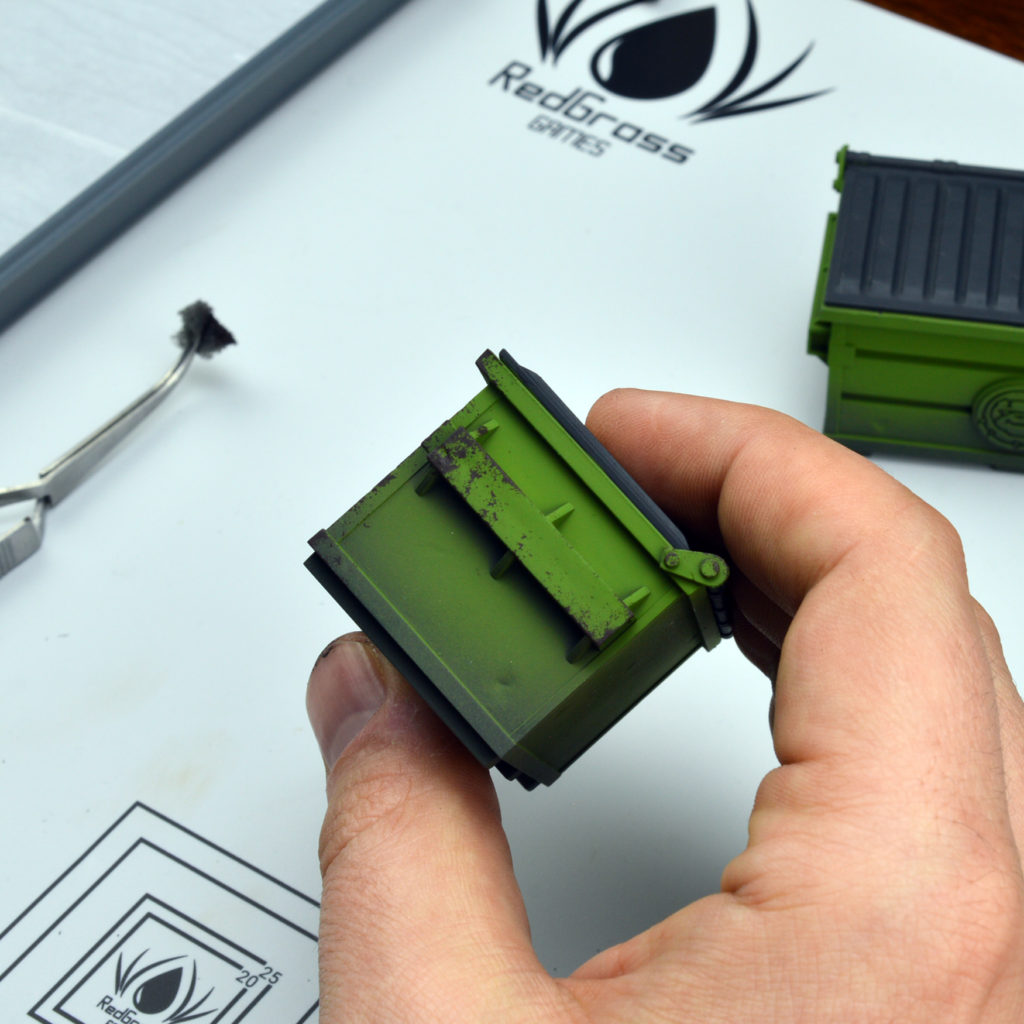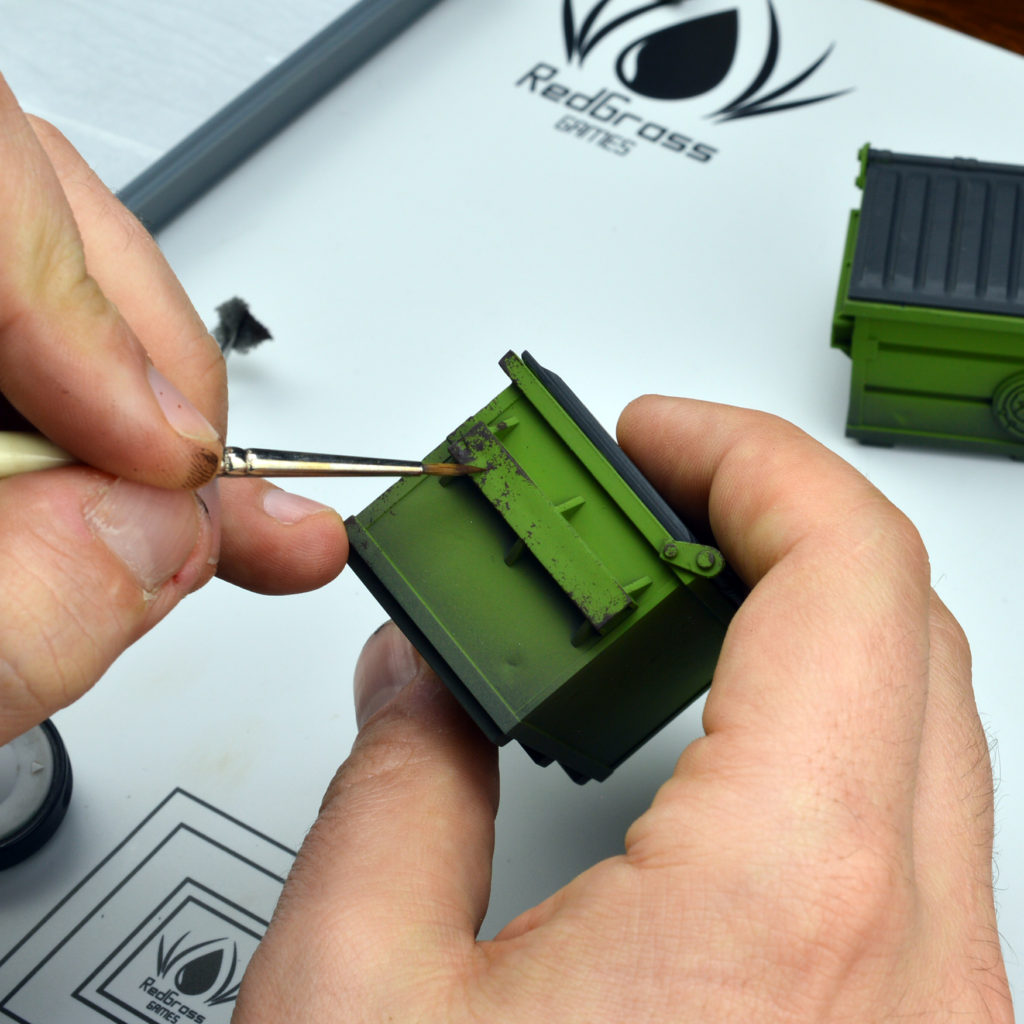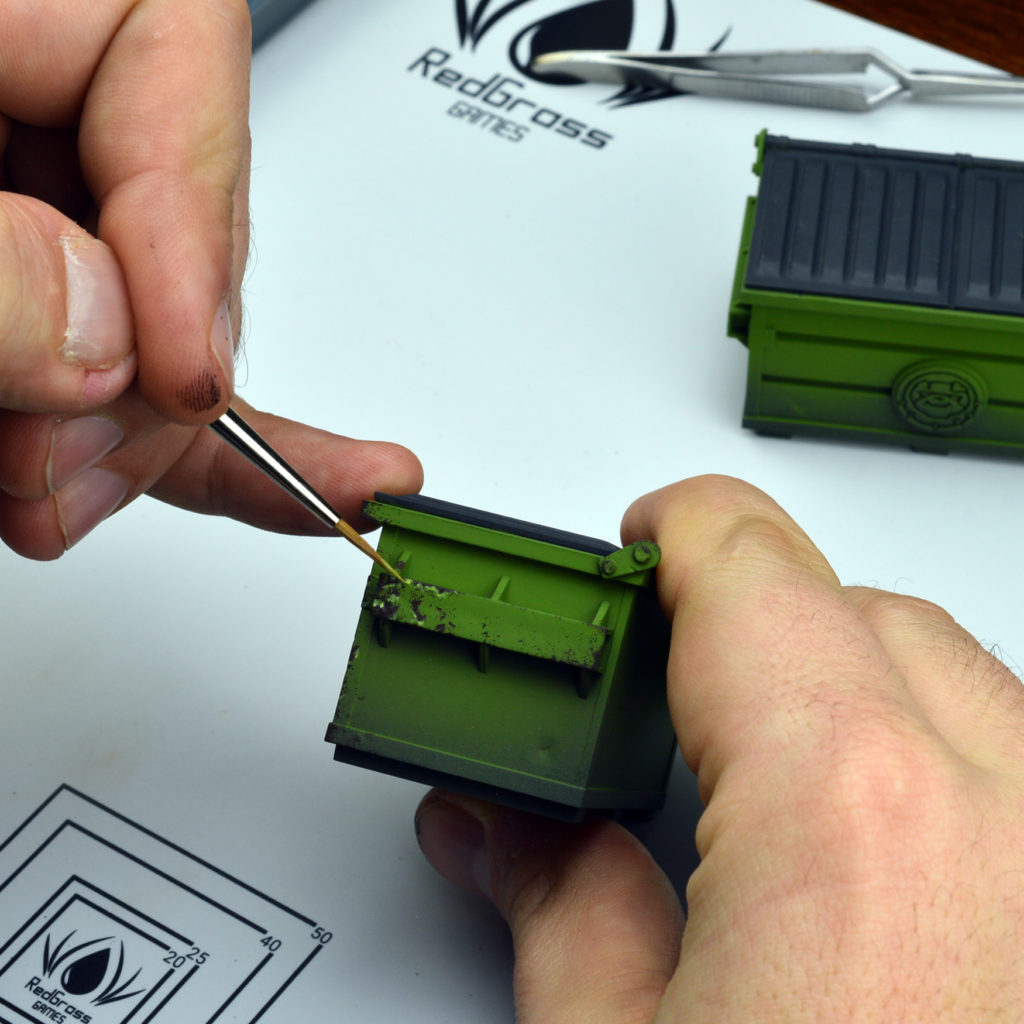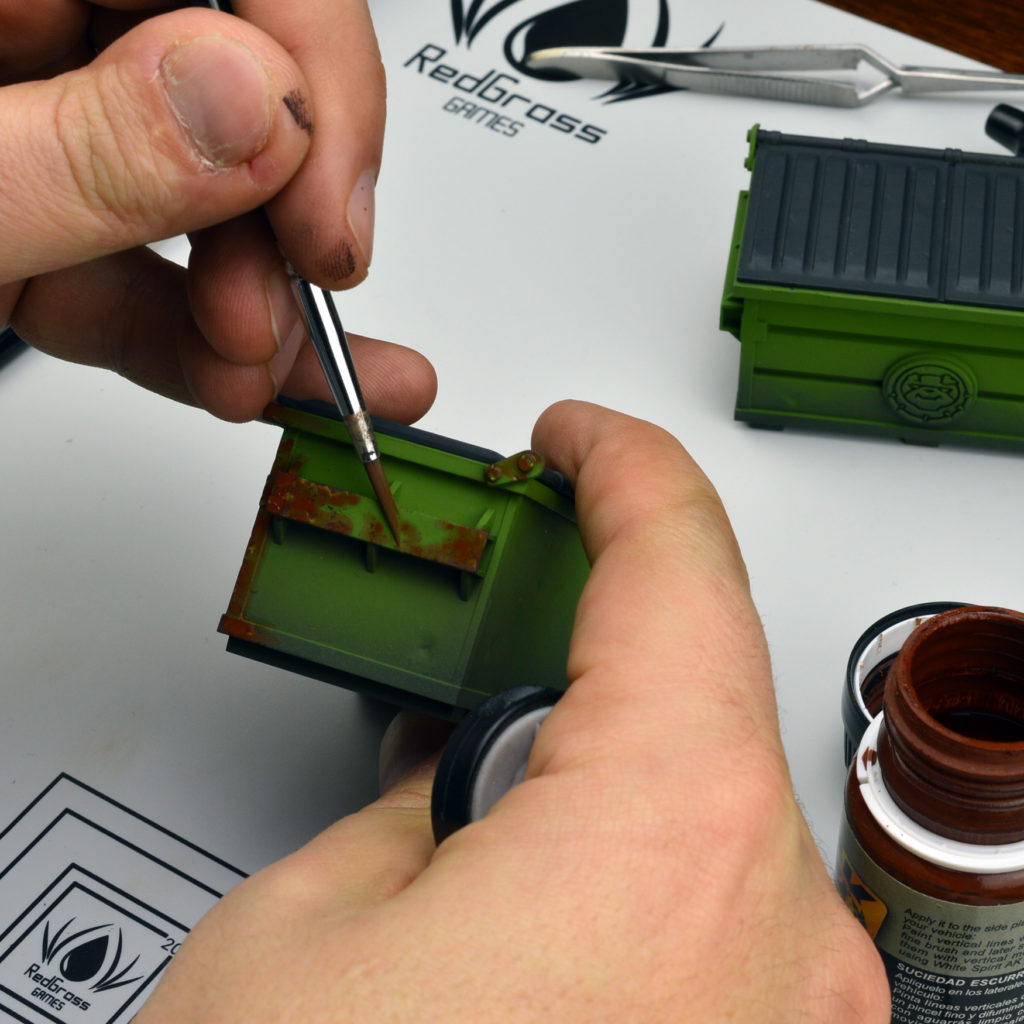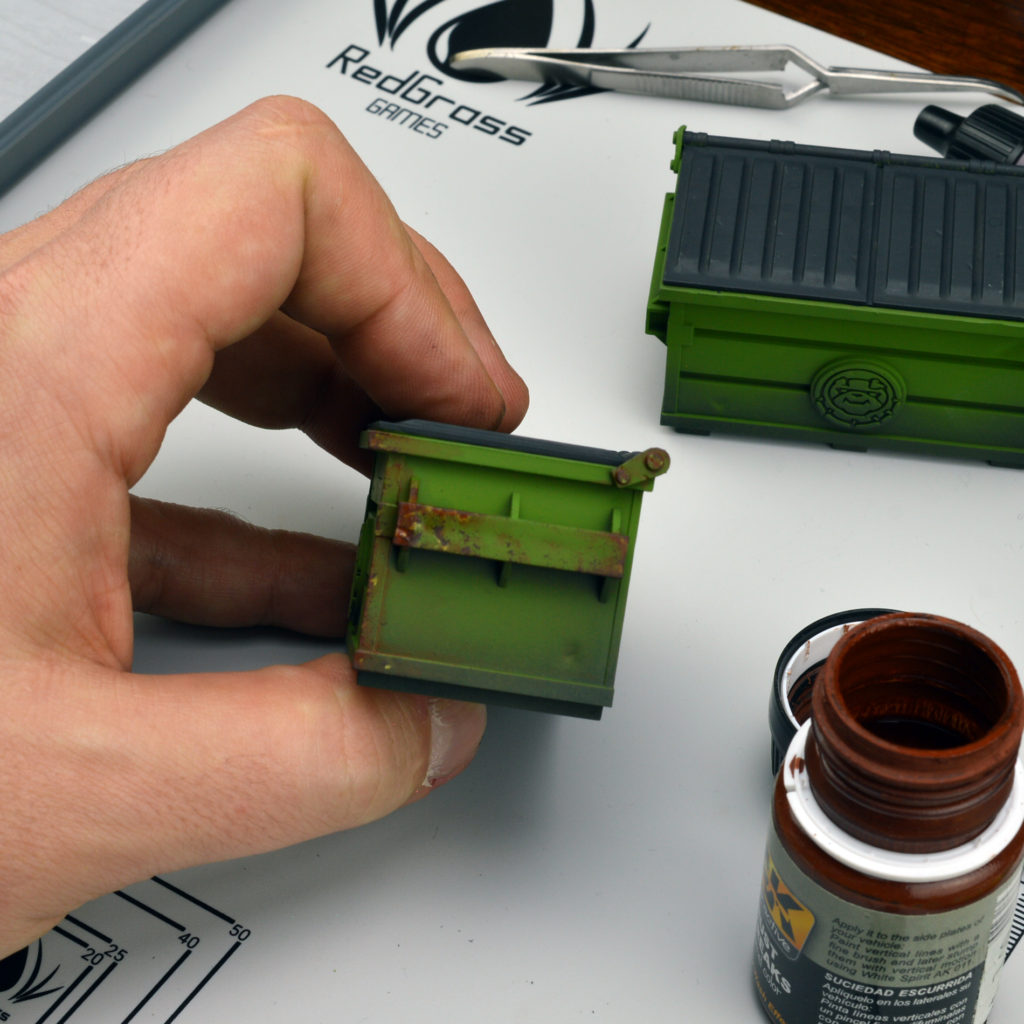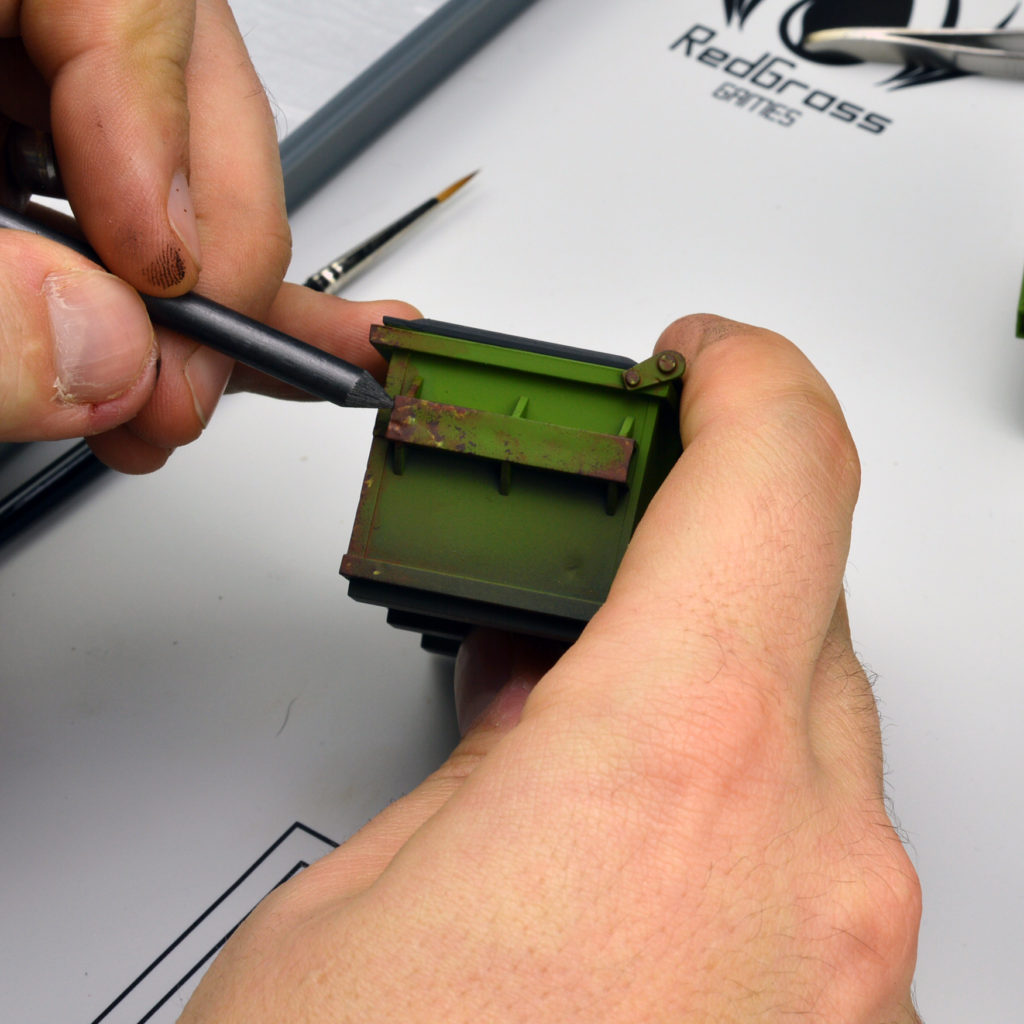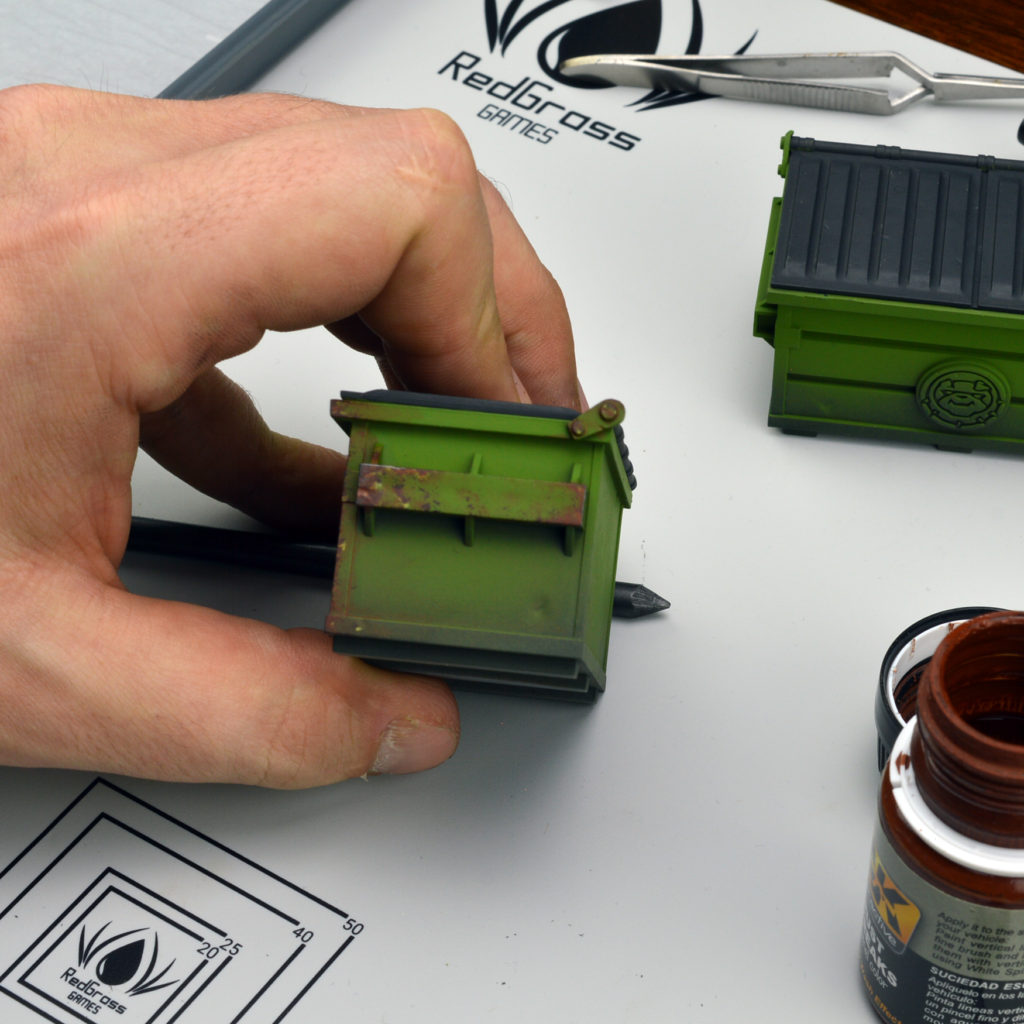A while back, I shared one of several techniques that I use for chipping: salt chipping. In this hangout, I want to introduce you to the method that requires nothing more than some sponge, brushes, and the acrylic paints of your choice.
Guest Writer JP
I call this technique manual chipping, and it offers the most control of any other technique, but it’s arguably the most time-consuming. Rather than relying on a product or the removal of paint, it is a method in which the artist paints the chips directly onto the model, like I did with this Salamanders Storm Eagle.
This technique ultimately offers the most realistic finish, in my opinion, but it can certainly feel rather tedious. That said, there are a few shortcuts. The first is to lay down some chips using a piece of sponge (in this case, I tore the corner off some sprue foam) and a dense acrylic paint.
Dab the sponge into whatever color you want the “exposed” layer to look like. I typically aim for a very dark brown or a primer type color, though I’ve seen people with metals instead. Make sure to dab off most of the paint on a paper towel and then stipple it onto the areas of the model that are most likely to see wear. In the case of this dumpster, I figured the corners are going to see the bulk of the wear and tear, so I emphasized the chipping there.
The amount of paint you dab on will decide the extent of the weathering, but I prefer to go light on the sponge. I then double back with a fine-tipped brush and use the same acrylic paint to paint in additional scratches and chips to add a bit more visual interest.
The next step is painting on a thin, bright layer under some of the bigger chips. This is to simulate paint that has peeled away or been exposed via the chipping. I went with a bright green color, but I usually go with whatever the highest highlight is. In this case, the chips contrast a bit too much. This does take a steady hand and some care (like I said earlier, this process can be tedious), but it adds a needed element.
Now, it’s time to tie it together. The chips, paint, and underlayer all stand in pretty stark contrast to one another. I decided to use an enamel paint that would make it look like the underlayers have been exposed to the elements for some time, causing rust to accumulate. For this, I used AK Interactive’s Rust Streaks. This is not a necessary product, though. I could have easily used an acrylic was or even just thinner a standard acrylic red way down and used that instead.
The reason I chose to use an enamel paint, however, is because they can be manipulated once applied to the model by applying some mineral spirits to feather out the harsh edges and thin the product into more of a filter in some places. This gentle discoloration helps blend all of the individual aspects together.
The final step is to simulate some exposed metal at the very edges. For this, I use a took that just about any of us have handy: graphite. A #2 pencil would do, but I happen to have a hobby graphite stick (yeah… I’m that guy) on hand and decided to use that. I ran it along the edges where the chipping is heaviest to give them a hint of exposed metal beneath the heavy rust.
And that’s that. The chipping is done and it’s time to move onto whatever the next step will be! Bear in mind that you can omit many of these stages depending on what your goals actually are. For a piece of scatter terrain like this, simply sponging on some wear and tear is probably plenty. If you want a display-quality model, however, taking the time to paint in additional chips, add enamels, and generally create more complexity in the weathering will likely pay off.
Next time, I’ll show you a third and final chipping technique: chipping medium. Until then, happy hobbying!
And remember, Frontline Gaming sells gaming products at a discount, every day in their webcart!



